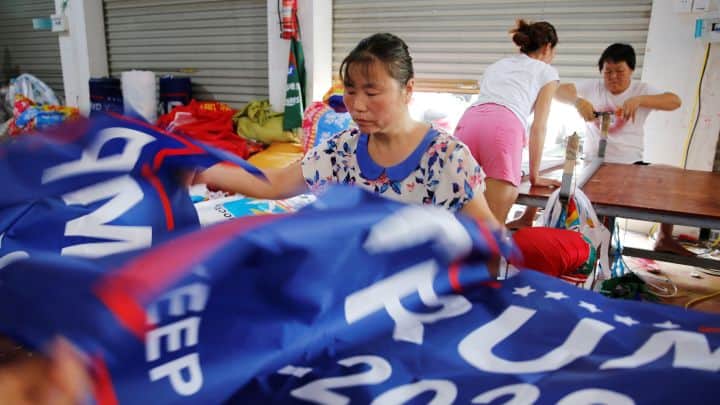
Activity in China’s manufacturing sector contracted for the first time in more than two years in the month of December amid a domestic economic slowdown and Beijing’s ongoing trade dispute with the U.S.
The Chinese National Bureau of Statistics said on Monday official manufacturing Purchasing Managers’ Index (PMI) was 49.4 — lower than the 49.9 analysts expected in a Reuters poll. The December reading was the weakest since February 2016, according to Reuters’ record.
That was worse than November’s official manufacturing PMI, which was 50.0. A reading above 50 indicates expansion, while a reading below that signals contraction.
In particular, new export orders contracted for a seventh straight month, with that measure falling to 46.6 from 47.0 in the previous month.
Meanwhile, China’s official non-manufacturing PMI came in at 53.8, which was higher than the reading of 53.4 in November.
The services sector accounts for more than half of the Chinese economy and the “bright spot” of the improved on-month expansion in December points to a rebalancing of the Chinese economy toward more consumption, Nomura economists wrote in a note on Monday.
Economic data from the world’s second-largest economy is being closely watched for signs of damage inflicted by the ongoing trade war between Washington and Beijing.
At the beginning of December, U.S. President Donald Trump and Chinese President Xi Jinping agreed to a 90-day ceasefire that delayed the planned Jan. 1 U.S. increase of tariffs on $200 billion worth of Chinese goods while they negotiate a trade deal.
On Saturday, Trump said on Twitter that he had a “long and very good call” with Xi and that a possible trade deal between the two countries was progressing well.
Yet beyond the tariffs battle, China’s economy has been facing its own domestic headwinds. Even before the escalation in trade tensions with the U.S. this year, Beijing was already trying to manage a slowdown in its economy after three decades of breakneck growth.
China’s worse-than-expected PMI reading on the last day of 2018 suggests a challenging start to 2019, said Frederic Neumann, co-head of Asian Economics Research at HSBC.
“China is a good gauge in terms of temperature about what’s going on in the global industrial cycle,” Neumann told CNBC’s “Squawk Box.”
The “PMI numbers out today suggest the economy is still decelerating. That’s going to weigh down not just Chinese GDP growth but really global trade,” Neumann said.
In fact, Nomura economists warned that “the worst is yet to come,” for China.
“Looking ahead, we see more headwinds to growth from weakening domestic demand, the ongoing credit downcycle, a cooling property sector and lingering China-U.S. trade tensions,” the economists wrote.
Despite the tariff fight with the U.S. over the last year, the Chinese manufacturing and export sectors held up well in 2018. Analysts however, attributed the robustness to exporters pushing forward shipment dates — also called front-loading — a phenomenon that was expected to run out of steam, as freight rates indicated.
In October, China reported economic growth of 6.5 percent year-over-year in the third quarter of 2018 — the weakest pace since the first quarter of 2009 as the country’s trade war with the U.S. put pressure on growth. China’s official growth target this year is around 6.5 percent.
The results of another private manufacturing survey focused on small and mid-sized firms will be released on Wednesday: China’s official PMI gauge focuses on large companies and state-owned enterprises, while the private survey by Caixin and IHS Markit focuses on small and medium-sized enterprises.





























